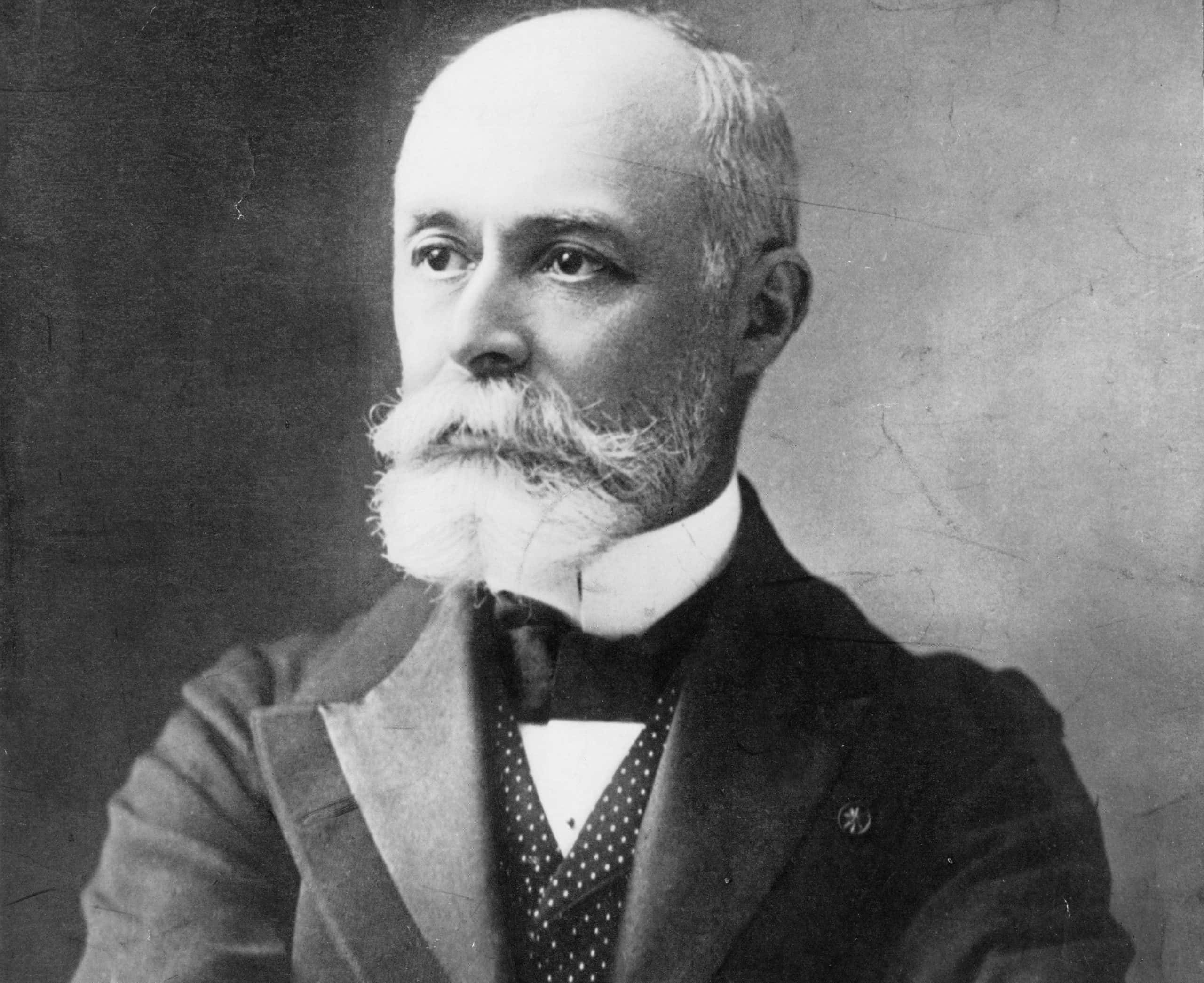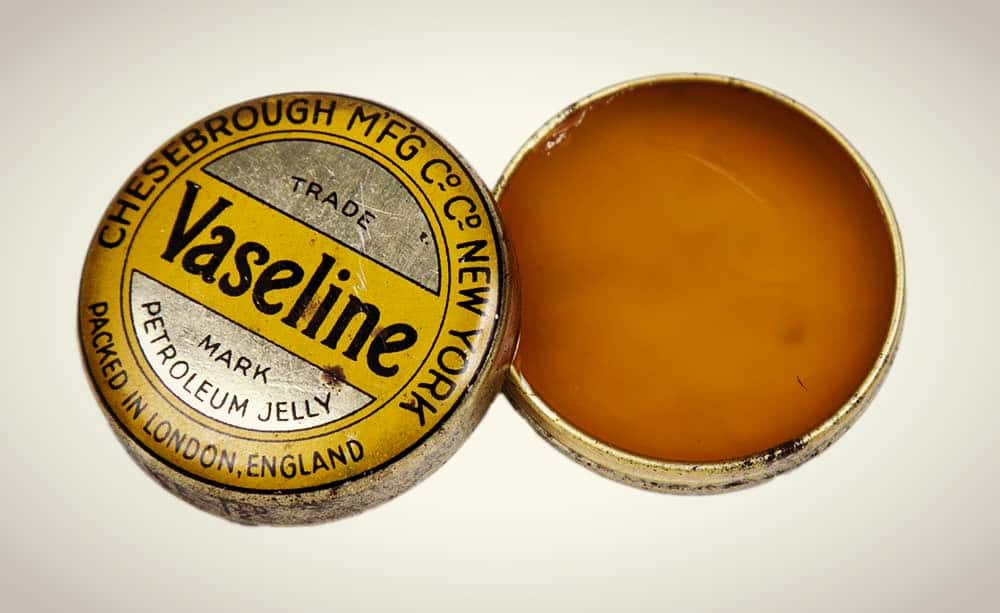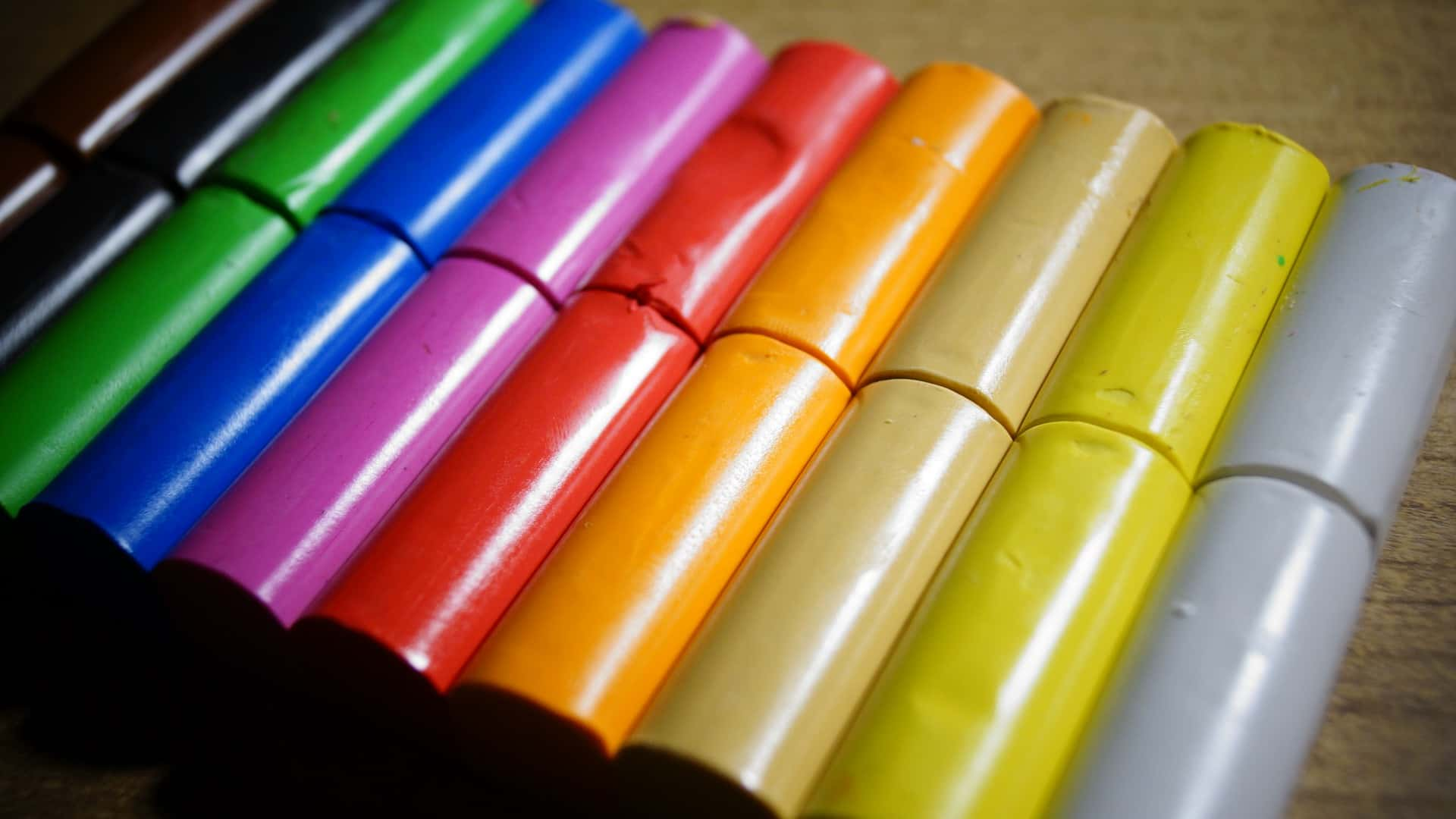“Name the greatest of all inventors. Accident". —Mark Twain
There are so many instances of scientists, researchers or inventors searching for one thing, only to come up with something unexpected, sometimes something even better. Without chance, accidents or just pure dumb luck, we could be missing out on tasty treats, useful devices, even lifesaving medicines or technologies. The credit can’t all go to chance however—though the things on this list may have been invented “by accident,” it still took the intelligence or insight of their creator to recognize these discoveries for what they really were. Here are 41 facts about fascinating accidental inventions or discoveries.
1. Not Quite The Same, But I'll Take It
Chinese alchemists in the ninth century may have been looking for a formula for the “elixir of life," but what they got when they mixed sulfur, charcoal, and saltpeter was maybe the exact opposite: gunpowder. The earliest confirmed discovery of gunpowder dates to the year 808, though references to an explosive mixture of three powders date back to the year 142 AD.

2. Strike-able Match
If you wanted to light your cigar or pipe before 1826 you were in for a bit of a hassle: you could either light a strip of paper or wood from an already-burning candle or lamp, or you could light a chemical match by dipping a sulphur-soaked matchstick into a bottle of phosphorous (which, yes, was just as dangerous as it sounds). Chemist John Walker was tinkering with making better chemical matches in his laboratory and found that a glob of his experiment was stuck to his spoon. When he tried to scrape it off, the mixture (of sulfide of antimony and chloride of potassium) caught fire. He had inadvertently invented the world’s first strikeable match.
3. Beetle Poop or Plastic?
In 1907, Leo de Baekeland was already wealthy from past inventions, but he continued to tinker in an effort to find a new formula for shellac. The previous formula was derived from Asian beetle poop—not an ideal method—so to find a substitute, de Baekeland mixed phenol and formaldehyde (plus applying heat and pressure) and wound up with a hard, moldable substance. It was even better than shellac—it could be molded into almost any shape and colour, and was used to manufacture industrial items, household items, even jewellery. What he called “Bakelite” was the first plastic ever invented.
4. Nine Years Ahead of Its Time
Dr. Harry Coover discovered cyanoacrylate in 1942, but he didn’t immediately see a use for the substance, which annoyingly stuck to everything. It wasn’t until he rediscovered the substance with a colleague in 1951 that they realized the potential of the glue, which formed an incredibly strong bond without the application of heat. They patented the discovery as “Eastman #910,” but you might know it by another name: superglue.
5. Mr. Cellophane
In 1900, Jacques E. Brandenberger was trying to invent a spill-proof tablecloth that would repel liquids rather than absorb them. But when he sprayed waterproof coating on fabric, it was much too stiff—no good for draping nicely on a table. What’s more, the clear coating easily separated from the cloth. He decided to scrap the fabric altogether and focused on his new invention: cellophane, a clear, crinkly material excellent for wrapping candy.
6. Slinky
Navy engineer Richard James was performing very serious experiments with springs, trying to keep sensitive instruments on ships stable while the ship is in motion. However, when he knocked over one of his experiments, he discovered a very unserious effect: the spring “stepped” into a series of arcs. James saw the potential of what he had discovered, and after tinkering with the metal the springs were made of, he debuted his toy at Gimbels department store in 1945. At present, more than 300 million of what what James called a “Slinky” have sold worldwide.
7. There's Got To Be a Better Name Than Rod Wax...
Robert Chesebrough was looking to strike it rich on the oil fields, but he discovered a different source of income. He noticed that rig workers were using a byprouct known as “rod wax” to treat cuts and burns. He took a sample of the residue home and synthesized it into petroleum jelly, which he began selling as Vaseline.
8. Non-Stick Hit
Roy Plunkett was trying to make a new refrigerant in 1938 when he thought a bottle containing his experiment had mysteriously emptied. The weight of the bottle mysteriously remained the same, so he sawed the bottle open and found it coated with a waxy substance that was very slippery. His discovery, teflon, was first used for aerospace manufacturing until a housewife urged her engineer husband to try the substance out on her cooking pans in 1954.
9. Who Else?
In 1905, 11-year-old Frank Epperson left a mixture of flavored soda on his porch with the stir-stick still in it. The next morning, he found the drink frozen solid. The inverted concoction became the very first popsicle, which he called an “Epsicle". This origin story is still printed on some Popsicle boxes.

Sign up to our newsletter.
History’s most fascinating stories and darkest secrets, delivered to your inbox daily. Making distraction rewarding since 2017.
10. Don't Forget Your Rogaine
Minoxidil (now sold under the brand name Rogaine) was originally developed in the 1950s as a cure for ulcers. The compound did nothing for ulcers, but it was found to be a powerful vasodilator (that is, it widened blood vessels and increased blood flow). Researchers conducting clinical trials on its use to treat hypertension noticed that hair growth was a side effect and by the 1960s the effects were so widely-known it was being prescribed off-label by doctors to patients looking for a cure for baldness.
11. Rainbow Modeling Compound
Noah McVicker was trying to make a product for Kutol Products that would clean coal dust from wallpaper, so he came up with a putty that would do the trick. When coal heating was replaced by natural gas, its manufacturer was facing bankruptcy. McVicker noticed an article in the newspaper about kids making art projects with the putty and was inspired to begin selling it as a toy for children. Play-Doh was born (although McVicker himself was leaning towards the name Rainbow Modeling Compound).
12. Egg-celent
Researchers in the 1940s were looking for a rubber replacement and mixed boric acid with silicone to produce a non-toxic gooey material that would stretch, bounce and not go moldy. However, it wasn’t a good replacement for rubber. An enterprising businessman, Peter Hodgson, caught wind of the substance and borrowed $147 to buy some and package it into plastic eggs, which is how Silly Putty is still sold today.
13. Watch the Hot Iron
An engineer at Canon got careless one day and rested a hot iron on his pen. Soon after, ink burst from the tip of his pen unexpectedly. He shared the experience with others at the company, and it led to the creation of the first inkjet printer.
14. Don't Spill on My Shoes
Patsy Sherman, a chemist at 3M, dropped a chemical substance on one of her shoes while she was trying to develop a rubber material that could stand up to jet fuel. Later, when her shoes got dirty, she noticed that one spot stayed clean. She retraced her steps and discovered what we now know as Scotchgard.
15. Chip on Her Shoulder
Ruth Graves Wakefield, owner of the Toll House Inn, ran out of cocoa and hoped that dropping chocolate chunks from a broken-up chocolate bar into her cookies would melt into nice chocolate cookies. The chips melted, but didn’t disperse, and the resulting cookies were even more delicious and incredibly popular. Toll House Cookies are now an American favorite.
16. Static From Space
Karl Jansky was working as an engineer at Bell Telephone Laboratories in the early 1930s. He couldn't find the source of static interfering with transatlantic voice transmissions. When he investigated further and performed some calculations, he discovered that the static was coming from outer space. Thus the field of radio astronomy was born.
17. Catchy Name
Jansky’s discovery gave way to the field of radio astronomy, but the true source of that radiation would be discovered years later. Two scientists named Arno Penzias and Robert Wilson were researching the phenomenon, known as Cosmic Microwave Background radiation (CMB). They combined their research with the new “Big Bang Theory” and found that it explained CMB. The pair received the Nobel Prize for their discoveries in 1978. So Jansky’s accidental discovery of radio astronomy actually helped prove the origins of the universe.
18. Polish Your Forks Please
Until the 1910s, cutlery was usually made of regular old steel, which required regular polishing to avoid rust, or silver, which was expensive. In 1912 Harry Brearley discovered a rustless steel alloy in a quest to manufacture rustproof firearm barrels. Two years later, a newspaper heralded the discovery of stainless steel, but its use in firearms wasn’t the main selling point: stainless steel cutlery would save a lot of time and energy spent polishing utensils.
19. Conehead
Many tasty treats have origin stories that are hard to verify, with multiple people often taking credit. But often a good story is as irresistible as the treats themselves. While there are examples in cookbooks of edible ice cream dishes dating from as early as 1825, Abe Doumar gets credit for popularizing the ice cream cone. He purchased a waffle from a waffle stand, rolled it up and dolloped a scoop of ice cream on top. He sold his confection at the St. Louis Exposition and they were such a success that he designed a baking machine specifically to make thin, crunchy waffle cones. His 36-iron machine produced 20 cones per minute and still operates in Norfolk, Virginia 100 years later.
20. Nuclear Fission
Enrico Fermi, an Italian physicist, was trying to create heavier and heavier elements by bombarding uranium atoms with neutrons—in effect, nuclear fusion. He succeeded in his project, but found some other by-products he couldn’t explain. Later on, other scientists realized these other elements weren't heavier than uranium, they were much lighter. Fermi had unwittingly split their nuclei in half—his experiments with nuclear fusion had resulted in nuclear fission and the world would never be the same.
21. Ether This or That
Medicines used to dull or eliminate pain have been around for centuries, but modern-day anesthesia owes its origins to the accidents of druggy revelers. Recreational use of ether or nitrous oxide (both of which induce euphoria and mild hallucinations) was common in the early 1800s—people would gather for “ether frolics” or “laughing parties” and noticed that when they injured themselves during their reveries, they didn’t feel any pain. Ether was first used as a general anaesthetic in 1842 when Dr. Crawford Long removed a tumor from the neck of a patient. Dr. Long had first encountered ether at an ether frolic while he was a medical student.
22. What to do With a Non-Sticky Glue
Many discoveries are made by people trying to come up with the exact opposite of what they create. Dr. Spencer Silver, a scientist at 3M, was trying to develop a super-strong adhesive when he accidentally created a not-very-sticky pressure-sensitive adhesive. Years later, a colleague suggested using the new glue to stick a bookmark into his hymn book. They borrowed the only paper available from the lab next door, which happened to be yellow, and the Post-It was born.
23. Grrrrrreat Luck!
John and Will Kellogg accidentally left some cooked wheat sitting out, and returned to find it stale. Rather than waste the wheat, they put it through rollers hoping to create long sheets. Instead, the wheat flaked apart. They toasted and served it anyway, and found their new food was popular. They experimented with different grains and found that corn was tastiest, and that’s the story of Kellogg’s Corn Flakes.
24. Coke-Cola
The inventor of Coca-Cola would probably be surprised at its success—he didn’t set out to create a delicious drink, but rather to develop a pain-relief medicine that he could use to curb his morphine addiction. The original recipe used coca leaves and kola nuts (plus sugar, color, and other flavors), which was sold mixed with carbonated water. Coca leaves contained coke (the illicit substance), and kola nuts contained caffeine, so a glass of the original recipe would have packed a serious punch. The coke was removed in 1903.
25. Do the Safety Glass
Laminated safety glass was invented in 1903 by Édouard Bénédictus, a French chemist. He dropped a flask that had contained cellulose nitrate and found that it shattered, but did not break. By 1911, he was selling laminated glass windshields that would reduce injuries in car accidents caused by broken glass.
26. Wash Your Hands!
When working with chemicals, most of us would take care to wash our hands before eating, but in 1879, Constantin Fahlberg forgot. He noticed an oddly-sweet taste on his hands while eating and connected it to the coal tar derivatives he was working with earlier that day. Fahlberg called his discovery “saccharin,” the first calorie-free artificial sweetener.
27. To Dye For
In 1864, 18-year-old William Perkin was experimenting with quinine in order to produce a new antimalarial drug. He discovered a substance that, when extracted with alcohol, was an intense purple color, as vibrant as anything in nature. Perkin, an artist by hobby, realized the potential of “mauvine,” as he called it, and began marketing it as the first synthetic dye. Not quite as good as a malaria treatment, but good enough.
 Wikimedia Commons, Wellcome Collection gallery
Wikimedia Commons, Wellcome Collection gallery
28. Do You Want a Prize for That?
By 1875, Alfred Nobel (yes, that Nobel) had already invented dynamite, the powerful nitroglycerine-based explosive that had a bad habit of “sweating,” making it unstable and prone to disastrous accidents. Nobel had been pondering a way to make the explosive less volatile, when he cut his finger on a piece of glass and applied colloidon (a plasticky dressing) to the wound. That night, kept awake by the pain in his finger, he realized that colloidon could be used to stabilize the chemicals in dynamite, thus producing gelignite, also known as blasting gelatin—the first plastic explosive, inspired by a simple injury.
29. Like a Glove on a Hot Stove
In the 1830s, natural rubber was a popular substance for waterproof shoes and boots, but it was unable to withstand freezing temperatures and extreme heat without melting or weakening. Charles Goodyear thought that he could make rubber more durable, and after years of failed experiments, he accidentally stumbled on the solution. In 1839, he accidentally dropped some rubber on a hot stove, which charred into a leathery substance with an elastic rim. He surmised that he could make the entire specimen rubbery by controlling the heat, thus creating weatherproof rubber. Unfortunately, Goodyear died without reaping the rewards of his discovery. His name does live on: the Goodyear Tire and Rubber Company was named after him, 40 years after his passing.
30. Burr-tiful
Swiss engineer George de Mestral was probably less annoyed than he was interested in the burrs stuck to his socks and in his dog’s fur after a walk through the bush. He looked at the burrs under a microscope and saw tiny hooks, and was inspired. He patented his discovery in 1955: a strip of material with loops, and a matching strip of material with tiny hooks, that would attach when pressed together. Those tiny burrs stuck to his dog had inspired the invention of velcro.
 Wikimedia Commons, Alexander Klink
Wikimedia Commons, Alexander Klink
31. I Melt for You
In 1945, engineer Percy Spencer was working on radar arrays with a microwave-emitting magnetron when he notice that a chocolate bar in his pants pocket had melted. He discovered that proximity to the magnetron had caused the chocolate to melt and saw the potential for food preparation. Thus the microwave oven was invented—and soon after, another world-changing invention happened. The first food cooked in Spencer’s microwave was popcorn—the world’s first microwave popcorn.
 Shutterstock
Shutterstock
32. Radioactive, Radioactive
In 1896, French scientist Henry Becquerel was working with phosphorescent materials, which glow after being exposed to light. However, when he performed experiments with uranium salts, the salts would darken a photographic plate even when wrapped in black paper—the effect wasn’t happening because of light. He called the effect “Becquerel Rays,” assuming that they were similar to X-Rays. The effect was further studied and eventually renamed “radiation” by Pierre and Marie Curie.
 Wikimedia Commons, Library of Congress
Wikimedia Commons, Library of Congress
33. Do it for the Kids
The wheel has been invented or discovered independently all over the world, but not every culture that discovered this simple machine has thought to use it for transportation. Children’s pull toys with wheels have been discovered in Mexico from the Olmec culture dating back to 1500 BC. The Olmecs are not known to have used the wheel for transport. This sounds unbelievable, but wheels were often used as part of transport pulled by large animals (like a horse, or ox-driven cart). There were no large land mammals in Mexico at that time, thus no inspiration for the wheeled cart.
34. A Whole New World
There is a popular misconception that North America was discovered by Christopher Columbus in 1492, but this is completely inaccurate. First of all, Indigenous peoples had known about these lands for centuries, after all, they lived there. Secondly, it wasn’t North America that Columbus discovered—he visited Cuba, the island of Hispaniola (now Haiti and the Dominican Republic) and South America, but he never visited what we call North America. However, when Columbus made his voyages, he wasn’t looking for the New World at all, but was searching for a passage by sea to Asia as a quicker trade route. In fact, Columbus himself insisted that the new lands he had visited were part of Asia. This may explain why the American continents are named for Amerigo Vespucci and not for Columbus.
35. X Ray Vision
Wilhelm Röntgen was performing a routine experiment with cathode rays in 1885 when he noticed that a chemical across the room had begun to glow, even when the tube was wrapped tightly in black cardboard. He was astounded that particles of light could pass through a solid cardboard (at least, he thought that’s what was happening). He quickly discovered that images could be produced with this incredible radiation—the first being a skeletal image of his wife’s hand. He called the rays “X-Rays,” with the “X” standing for “unknown". Röntgen received the first Nobel Prize in Physics in 1901 for his discovery.
36. Take That!
A cranky diner in 1853 complained that the potatoes he was being served at Moon’s Lake House in Saratoga Springs, New York were too soggy, too thick, and not salty enough. Chef George Crum had enough—to prove a point, he sliced paper-thin potatoes and fried them to a crisp, then doused them with salt then served them to his customer as an insult. The diner loved them, and “Saratoga Chips” took off.
37. World Changing
In 1928, Alexander Fleming accidentally left an uncovered petri dish filled with the bacteria staphylococcus out in his lab when he left for a month's vacation. When he returned, he noticed that the bacteria in the dish wasn’t present where the mold was growing—the mold actually destroyed the bacteria! He had discovered penicillin, the very first antibiotic, which would eventually completely revolutionize the treatment of bacterial infections. Unfortunately, at the time of Fleming's discovery it wasn’t possible to produce the drug in large amounts, so his discovery slipped under the radar. Later, in the 1940s, other scientists would learn how to mass-produce penicillin, and soon managed to create new antibiotics, which have since saved millions of lives worldwide.
38. Less Accidental Than You Think
It’s one of the best-known stories in the history of science: an apple falls by chance onto the head of Isaac Newton, and “Eureka!” he discovered gravity. It may not be entirely true—it’s suggested he merely saw an apple fall, or maybe even just thought about it, and the apple only provided the inspiration for Newton to devote time and energy to thinking about why an apple falls straight down to the ground. Newton himself put the work into formulating his theory, and finely honed his own retelling of the apple anecdote, which he told many times throughout the rest of his life.
39. LOL BRB, JK, G2G
From something so small and boring came something so great. Texting (aka “short message service” or “SMS”) was first built as a cell phone functionality so that telecom engineers could send messages to each other while testing networks. The first text was sent on December 3rd, 1992 by a 25-year-old engineer named Neil Papworth. His message, sent from a computer to the cellphone of Vodafone director Richard Jarvis was simple: “merry christmas". SMS was slow to catch on—mostly due to billing irregularities and because it wasn’t always available between networks, but by 2007, over 2/3 of cellphone users texted.
40. It Really Works
When Sildenafil was in clinical trials with human subjects, the heart-disease drug was having some interesting side effects. The drug, then known as “UK92480” relaxed blood vessels in the heart and eased symptoms of angina, but it also relaxed blood vessels elsewhere. Subjects reported increased erections, and presumably many of them weren’t too upset about it either. Pfizer renamed the drug “Viagra,” which hit shelves in 1998. They now do over $2 billion in sales each year.
 Wikimedia Commons, allen watkin
Wikimedia Commons, allen watkin
41. Lucy in the Sky
The inventor of LSD was unaware of its effects until he unknowingly ingested more than ten times the threshold dose and then rode home on his bicycle. Lysergic acid diethylamide (LSD) was first synthesized in 1938 by Swiss chemist Albert Hofmann. He was studying ergotamine, a substance found in ergot mould which grows on bread, when he accidentally ingested some LSD and felt strange. A few days later, he decided to see what the effects of the drug really were, so he took what he thought was a small amount, 250 micrograms (it turns out that a threshold dose is actually just 20 micrograms). He was escorted home by his assistant on a bicycle, and while he felt severe fear and anxiety initially, he eventually began to enjoy the hallucinogenic experience. That day, April 19, 1943, is still celebrated today in psychedelic communities as "Bicycle Day".
Sources: 1, 2, 3, 4, 5, 6, 7, 8, 9, 10, 11, 12, 13, 14, 15, 16, 17, 18, 19, 20, 21, 22, 23, 24, 25, 26, 27, 28, 29, 30, 31, 32, 33, 34, 35, 36, 37, 38, 39, 40, 41, 42, 43, 44, 45, 46, 47, 48, 49












































